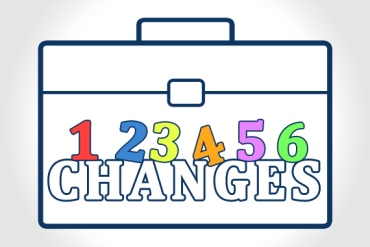You don’t get a pass this year on big health insurance decisions because you’re not shopping in an Affordable Care Act marketplace. Employer medical plans — where most working-age folks get coverage — are changing too.
Rising costs, a looming tax on rich benefit packages and the idea that people should buy medical treatment the way they shop for cell phones have increased odds that workplace plans will be very different in 2015.
“If there’s any year employees should pay attention to their annual enrollment material, this is probably the year,” said Brian Marcotte, CEO of the National Business Group on Health, which represents large employers.
In other words, don’t blow off the human resources seminars. Ask these questions.

Illustration by Andrew Villegas/KHN
1. Is my doctor still in the network?
Some employers are shifting to plans that look like the HMOs of the 1990s, with limited networks of physicians and hospitals. Provider affiliations change even when companies don’t adopt a “narrow network.”
Insurers publish directories, but the surest way to see if docs or hospitals take your plan is to call and ask.
“People tend to find out the hard way how their health plan works,” said Karen Pollitz, a senior fellow with the Kaiser Family Foundation. “Don’t take for granted that everything will be the same as last year.” (Kaiser Health News is an editorially independent program of the foundation.)
2. Is my employer changing where I get labs and medications?
For expensive treatments — for diseases such as cancer or multiple sclerosis — some companies are hiring preferred vendors. Getting infusions or prescriptions outside this network could cost thousands extra, just as with doctors and hospitals.
3. How will my out-of-pocket costs go up?
It’s probably not a question of if. Shifting medical expense to workers benefits employers because it means they absorb less of a plan’s overall cost increases. By lowering the value of the insurance, it also shields companies from the “Cadillac tax” on high-end coverage that begins in 2018.
Having consumers pay more is also supposed to nudge them to buy thoughtfully — to consider whether procedures are necessary and to find good prices.
“It gets them more engaged in making decisions,” said Dave Osterndorf, a benefits consultant with Towers Watson.
How well this will control total costs is very unclear.
Your company is probably raising deductibles — the amount you pay for care before your insurance kicks in. The average deductible for a single worker rose to $1,217 this year, according to the Kaiser Family Foundation. One large employer in three surveyed by Marcotte’s group planned to offer only high-deductible plans (at least $2,600 for families) in 2015.
Employers are also scrapping co-payments — fixed charges collected during an office or pharmacy visit.
Once you might have made a $20 copay for a $100 prescription, with the insurance company picking up the other $80. Now you might pay the full $100, with the cost applied against your deductible, Marcotte said.
4. How do I compare medical prices and quality?
Companies concede they can’t push workers to shop around without giving information on prices and quality.
Tools to comparison shop are often primitive. But you should take advantage of whatever resources, usually an online app from the insurance company, are available.
5. Can I use tax-free money for out-of-pocket payments?
Workers are familiar with flexible spending accounts (which aren’t that flexible). You contribute pretax dollars and then have to spend them on medical costs before a certain time.
Employers increasingly offer health savings accounts, which have more options. Contribution limits for HSAs are higher. Employers often chip in. There is no deadline to spend the money, and you keep it if you quit the company. So you can let it build up if you stay healthy.
Don’t necessarily think of HSAs as money down the drain, says Osterndorf. Think of them as a different kind of retirement savings plan.
6. How is my prescription plan set up?
Drugs are one of the fastest-rising medical costs. To try to control them, employers are splitting pharma benefits into more layers than ever before. Cost-sharing is lowest for drugs listed in formulary’s bottom tiers – usually cheap generics — and highest for specialty drugs and biologics.
If you’re on a long-term prescription, check how it’s covered so you know how much to put in the savings account to pay for it. Also see if a less-expensive drug will deliver the same benefit.






